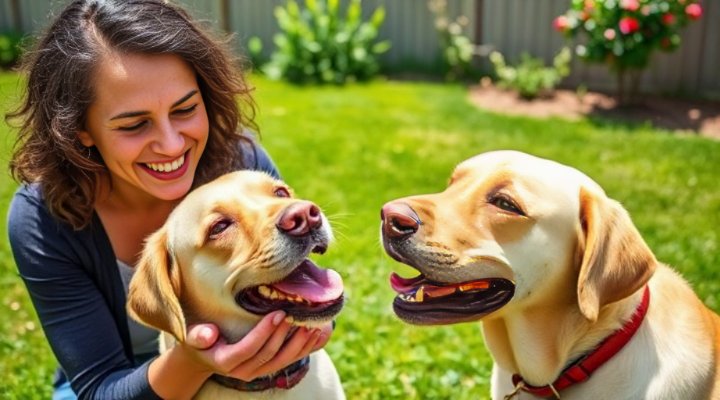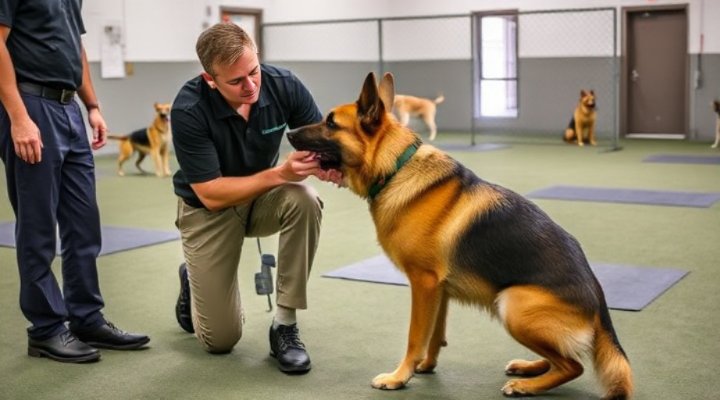Stop dog biting is one of the most important lessons you can teach your furry friend. Whether you have a playful puppy or an adult dog with biting tendencies, understanding why dogs bite and how to correct this behavior is crucial for a harmonious relationship.
Understanding Why Dogs Bite
Before we dive into training techniques, it’s essential to understand why dogs bite in the first place. Puppies naturally explore the world with their mouths, much like human babies. However, if this behavior isn’t properly guided, it can develop into problematic biting in adulthood.

Adult dogs may bite for various reasons including fear, territorial protection, pain, or simply because they weren’t properly trained as puppies. According to the American Veterinary Medical Association, most dog bites can be prevented through proper training and socialization.
Puppy Bite Inhibition Training
The best time to stop dog biting is during puppyhood. Puppy bite inhibition training teaches your dog to control the force of their bite. Here’s how to do it effectively:
- When your puppy bites too hard during play, let out a high-pitched “ouch!” sound
- Immediately stop playing and ignore your puppy for 10-20 seconds
- If the behavior continues, leave the room briefly
- Return and offer an appropriate chew toy instead
This method mimics how puppies learn bite inhibition from their littermates. For more puppy training tips, check out our guide on 10 Fun Tricks to Teach Your Dog.

Positive Reinforcement Techniques
Positive reinforcement is the most effective way to stop dog biting. This means rewarding good behavior rather than punishing bad behavior. Here are some key strategies:
- Reward your dog with treats and praise when they play without biting
- Use clicker training to mark the exact moment of good behavior
- Provide plenty of appropriate chew toys
- Redirect biting behavior to toys immediately
The ASPCA recommends positive reinforcement as the most humane and effective training method. For dogs with more severe biting issues, our article on finding a dog therapist might be helpful.
Teaching the “Leave It” Command
One of the most useful commands to stop dog biting is “leave it.” Here’s how to teach it:
- Hold a treat in your closed hand
- When your dog sniffs or licks your hand, say “leave it”
- Wait until they stop trying to get the treat
- Immediately reward them with a different treat from your other hand
- Gradually increase difficulty by placing treats on the floor

Managing Aggressive Biting in Adult Dogs
If you’re dealing with an adult dog that bites, the approach needs to be more careful and systematic. First, identify the triggers for biting – is it during play, when scared, or when guarding resources?
For resource guarding (when dogs bite to protect food or toys), try these steps:
- Never take items away directly from your dog’s mouth
- Teach “drop it” by offering high-value treats in exchange
- Practice trading games to build trust
- Feed your dog in a quiet space to reduce anxiety
For fear-based biting, gradual desensitization is key. Our guide on training fearful dogs offers additional helpful techniques.
When to Seek Professional Help
While most biting issues can be resolved with consistent training, some situations require professional intervention:
- Bites that break skin or cause injury
- Biting accompanied by aggressive body language (raised hackles, growling)
- Sudden onset of biting behavior in an adult dog
- Biting directed at children or vulnerable individuals
In these cases, consult a certified professional dog trainer or veterinary behaviorist immediately.

Preventing Biting Through Proper Socialization
Proper socialization is one of the best ways to prevent biting behavior from developing. Expose your puppy to various people, animals, and environments in a positive way. The critical socialization period is between 3-14 weeks of age.
Key socialization experiences include:
- Meeting people of different ages, sizes, and appearances
- Positive interactions with other vaccinated dogs
- Exposure to various sounds and environments
- Handling exercises (touching paws, ears, mouth)
For more on socialization, see our article on training social dogs.
Consistency is Key
Regardless of which techniques you use to stop dog biting, consistency is crucial. All family members must follow the same rules and use the same commands. Mixed messages will only confuse your dog and prolong the training process.
Remember that stopping biting behavior takes time and patience. Celebrate small victories and don’t get discouraged by setbacks. With proper training, even dogs with strong biting instincts can learn appropriate behavior.
For more training resources, explore our complete dog training guide.
Related Keywords:
dog bite prevention, puppy mouthing, aggressive dog training, bite inhibition, dog behavior correction, stop puppy biting, dog training techniques, positive reinforcement training

